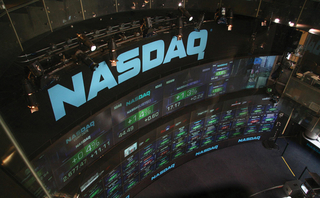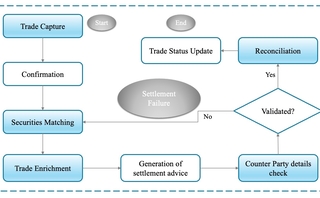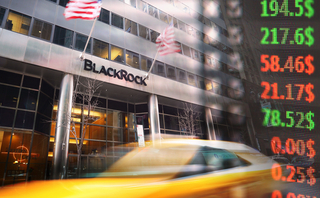
Integration looms large for buy-side firms deciding on whether to buy or build
As high-speed trading systems become par for the course, asset managers turn their focus to integration capabilities, according to a new study.
It’s the age-old question for technology professionals at financial firms: buy or build? Buying systems off-the-shelf gives standardization and economies of scale; whereas, building in-house provides customization and potentially greater performance. For years, either answer meant compromising on either cost or performance. But now, it seems that the buy side is gradually beginning to converge on an answer: both.
A study released today by research firm Coalition Greenwich suggests that asset managers are increasingly opting for a hybrid approach, starting off with third-party solutions and integrating proprietary systems as their businesses grow. The research, based on responses from 200 buy-side market participants, also addresses a host of other questions on how asset managers go about selecting front-end trading technology, including what attributes are most sought after, satisfaction levels with existing technology, and why changing providers can be such an upheaval.
Of the respondents to the survey, almost half of those classified as “boutique” buy-side firms use a mix of proprietary and vendor-provided systems, with the larger firms more likely to favor fully proprietary technology (33% of those with assets under management of $1 billion or more, compared to just 15% of those with AUM of $500 million or less). And with 70% still relying on multiple platforms for different asset classes, it comes as little surprise that the ability to integrate with other trading platforms and brokers ranked as a priority for the majority of respondents.
This indicates a pattern among asset managers. Smaller institutions are more likely to choose a third-party trading system, prioritizing a quick setup and lower initial investment. Hiring a team of developers to build a trading platform from scratch is a financial undertaking beyond the budget of the average young firm.
“Trading systems are the heart of most firms. But there’s a commitment of a million dollars a year [to build your own platform]. If you’re managing $100 million dollars of assets, you probably can’t afford that for the first two or three years,” explains a trader at a large buy-side firm.
But as AUM grows, shops look for the ability to build proprietary systems in new business areas and integrate them with their core platform, as well as add connectivity to new custodians, fund administrators, and counterparties.
“As multi-strategy funds become more commonplace, multi-strategy offerings will become more important. Even if you’re an equity long-only fund today, you’d be mad not to consider that you might want to get into fixed income as you grow,” the trader says.
Acceleration or integration?
Significantly, the Coalition Greenwich study also calls into question the dominance of speed as a criterion in the selection process of new trading platforms.
Performance metrics like execution speed and response time have long held sway among asset managers looking for new tech platforms. But the research shows that other ease-of-use factors are beginning to influence the discussion. Traders, in particular, put the most value on multi-asset capabilities and good integration with other platforms, according to the report.
The study suggests that this may be a consequence of high-speed systems already being considered “table stakes.”
“I think speed used to be the biggest thing. Now, you’re probably looking more at access to algos,” says the buy-side trader. “Does the platform have its own? Do you have access to algos from different banks or brokers or boutique algo providers? And you look at a trading system as an environment where you can connect to different brokers, different venues, and deploy different algos in the execution.”
Trevor Hunt, an advisor to CTOs at IT consulting firm Behind Every Cloud, agrees that integration is a top priority in selecting trading technology. “I can see that integration piece being needed. And more important than speed, most definitely,” he says.
Hunt has extensive experience with an array of trading systems, having worked as CTO and CIO at MUFG Investor Services and as global head of operations at UBS Global Asset Management. He emphasizes that trading technology covers more than just execution, stretching across a firm’s workflows.
“Actually [the integration point] doesn’t just apply to multi-asset. You need to be able to integrate your trading system with other platforms that you put in place to manage risk, regulatory reporting, and—dare I say—ESG, as well,” Hunt says.
Poor integration between a firm’s systems can lead to data transfer issues, settlement breaks, and delayed orders, especially at times when market volumes are high. The complexity of these interconnected systems only becomes greater when trading connections are needed for regulatory functions such as real-time ESG disclosures, which are often added to the platform as an afterthought.
“It’s human nature to not do things properly,” says the buy-side trader. “As you go along, you take shortcuts and figure you’ll go back and tidy up later. And you can say the same with growing a trading system. Very few firms will sit down and build the perfect system from scratch. In most cases, you won’t have the functionality or the backup or the resilience or whatever it is that you would otherwise build if you had the luxury. If you’re a nimble hedge fund just starting up, you don’t have the resources.”
As trading systems grow in complexity with the addition of asset classes, compliance functions, and liquidity pools, it is becoming increasingly common for firms to outsource trading altogether.
“Over the last 10 years or so there’s been a perennial question of, ‘Do we need to trade in-house anymore?’ going on in the buy side. Can we outsource that as a function, rather than have that as an in-house capability, because it’s expensive to have all the traders themselves, then all of the equipment that they need, and can they access the liquidity that a larger specialist trading firm or capability can achieve?” Hunt says.
Further reading
Only users who have a paid subscription or are part of a corporate subscription are able to print or copy content.
To access these options, along with all other subscription benefits, please contact info@waterstechnology.com or view our subscription options here: http://subscriptions.waterstechnology.com/subscribe
You are currently unable to print this content. Please contact info@waterstechnology.com to find out more.
You are currently unable to copy this content. Please contact info@waterstechnology.com to find out more.
Copyright Infopro Digital Limited. All rights reserved.
You may share this content using our article tools. Printing this content is for the sole use of the Authorised User (named subscriber), as outlined in our terms and conditions - https://www.infopro-insight.com/terms-conditions/insight-subscriptions/
If you would like to purchase additional rights please email info@waterstechnology.com
Copyright Infopro Digital Limited. All rights reserved.
You may share this content using our article tools. Copying this content is for the sole use of the Authorised User (named subscriber), as outlined in our terms and conditions - https://www.infopro-insight.com/terms-conditions/insight-subscriptions/
If you would like to purchase additional rights please email info@waterstechnology.com
More on Trading Tech
For MarketAxess, portfolio trading buoys flat revenue in Q3
The vendor is betting on new platforms like X-Pro and Adaptive Auto-X, which helped forge a record quarter for platform usage.
Quants look to language models to predict market impact
Oxford-Man Institute says LLM-type engine that ‘reads’ order-book messages could help improve execution
JP Morgan pulls plug on deep learning model for FX algos
The bank has turned to less complex models that are easier to explain to clients.
Nasdaq says SaaS business now makes up 37% of revenues
The exchange operator’s Q3 earnings bring the Adenza and Verafin acquisitions center stage.
Harnessing generative AI to address security settlement challenges
A new paper from IBM researchers explores settlement challenges and looks at how generative AI can, among other things, identify the underlying cause of an issue and rectify the errors.
The causal AI wave could be the next to hit
As LLMs and generative AI grab headlines, another AI subset is gaining ground—and it might solve what generative AI can’t.
Waters Wrap: Operational efficiency and managed services—a stronger connection
As cloud, AI, open-source, APIs and other technologies evolve, Anthony says the choice to buy or build is rapidly evolving for chief operating officers, too.
BlackRock forecasts return to fixed income amid efforts to electronify market
The world's largest asset manager expects bond markets to make headway once rates settle.







